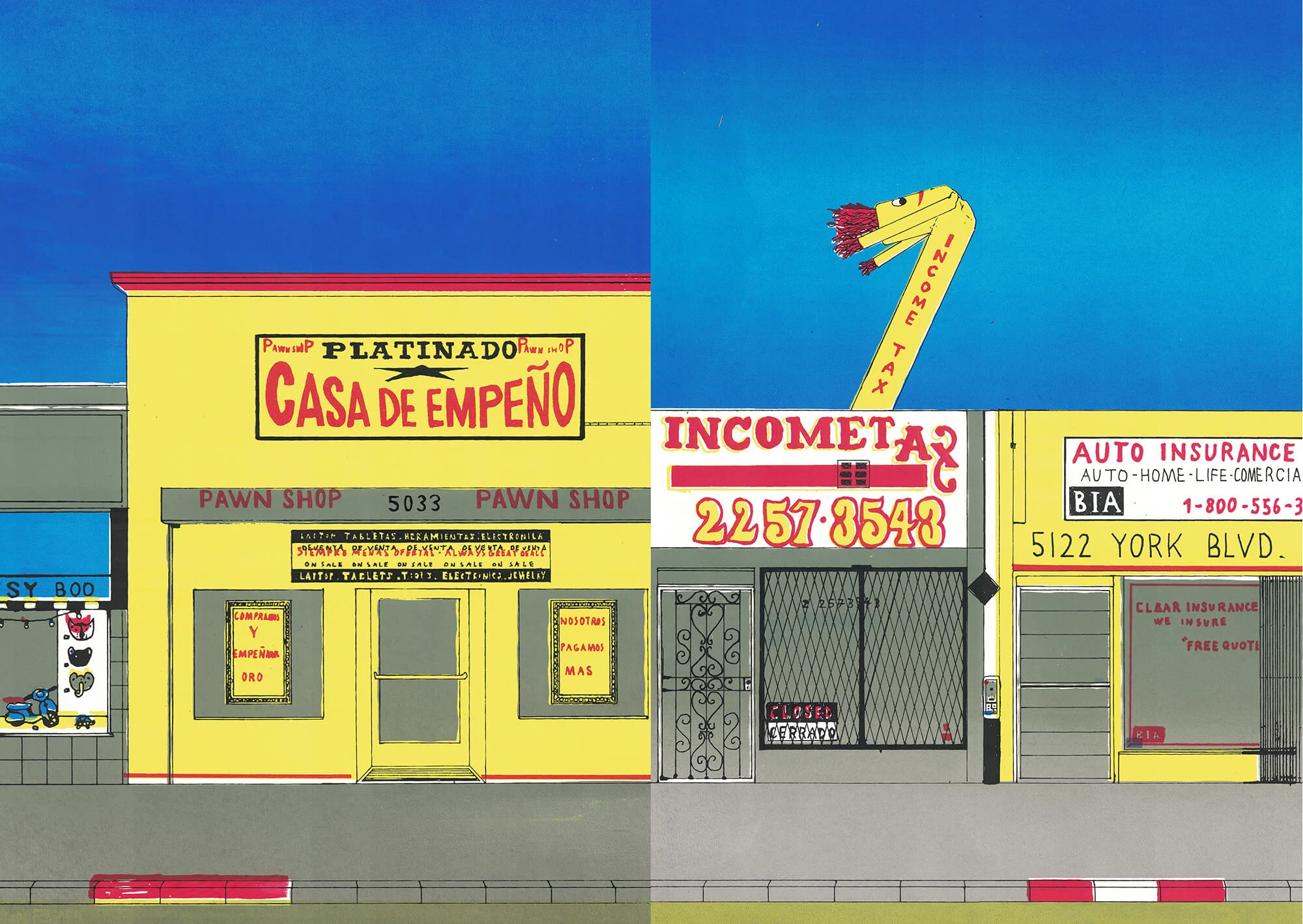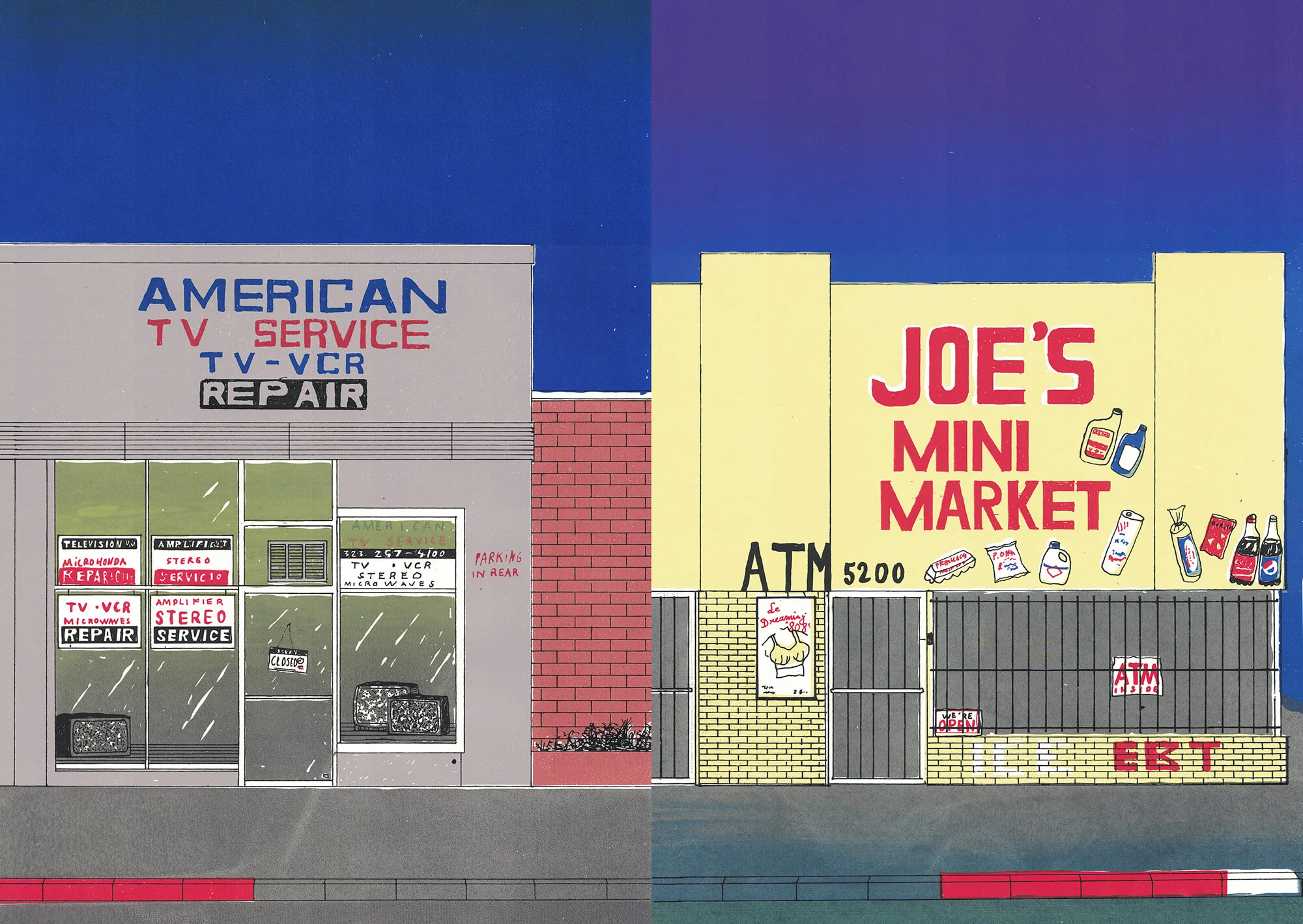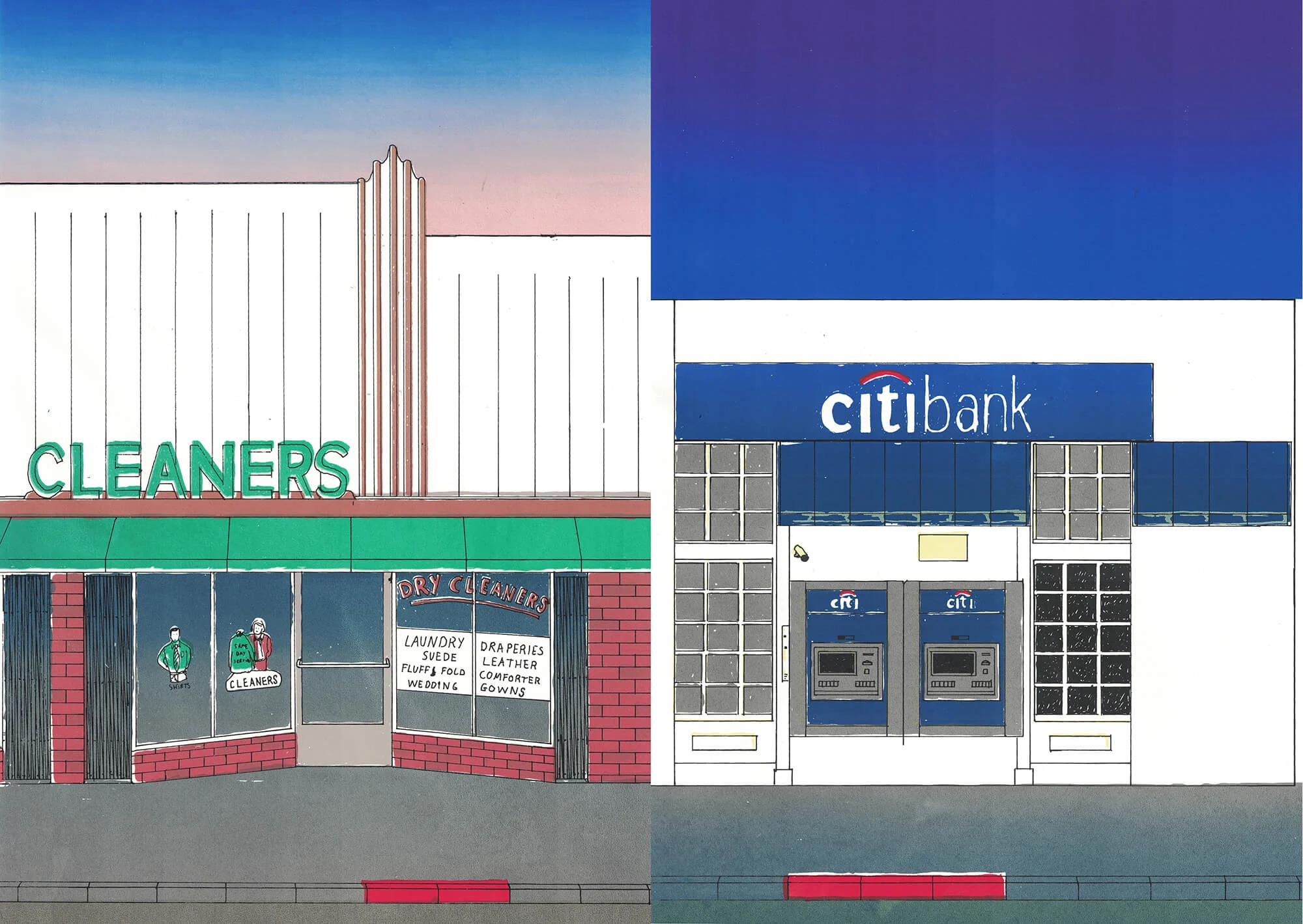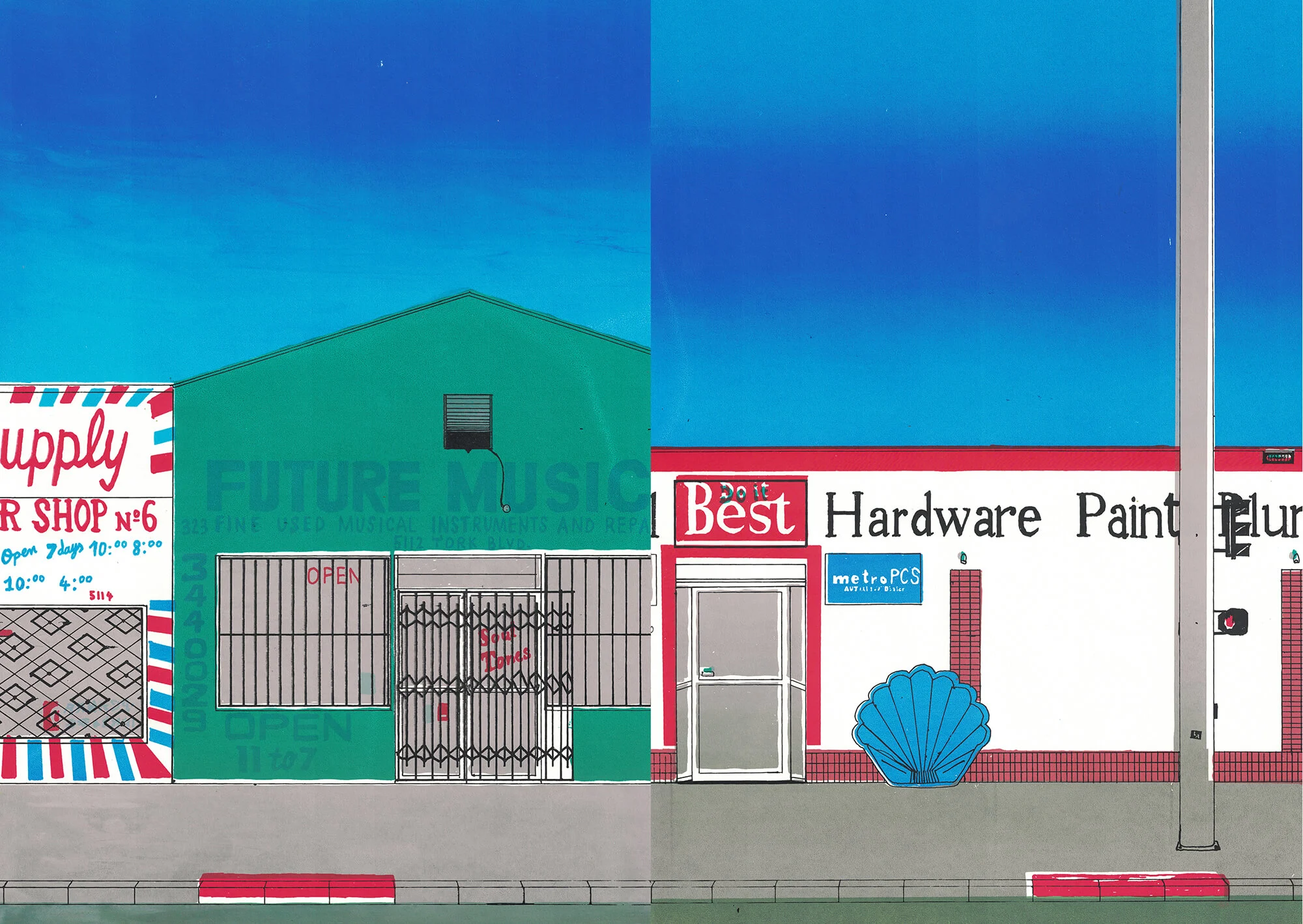

French artist Hugo Rocci traveled to the US for the first time on a bizarre and specific mission: to visit the country’s many roadside attractions, from the enormous Dinny the Dinosaur and Mr Rex in Cabazon, California to the Giant Artichoke of Castroville, California. But he would never have guessed that visiting these roadside attractions would lead to a project about one specific street in Los Angeles.
He wrote about these objects – also known as novelty architecture – in his graduation thesis at the Gerrit Rietveld Academie in Amsterdam, and one of them, a giant roadside polar bear fashioned into a quaint cafe, even made it into his film Souvent sur les dents. In the seven-minute short, Hugo innovatively combines live action shot on green screen with hand-painted backdrops.
While in LA visiting the giant binoculars he stayed with a friend who worked at The Pop-Hop bookstore, which is how he first discovered York Boulevard, a street running through the north-east borough Highland Park. “It’s a really long, colorful street with a beautiful mix of cultures and communities,” and the well-trodden subject of his screen-printed book of the same name.
He was drawn to the local businesses surviving on York Boulevard in among the newer trendier places rapidly opening shop. Instead of the hip brunch spots he preferred the dry cleaner and the dentist, the pawn shop and the auto repair place.

It always makes me sad to see such beautiful history replaced by such cold, loveless signs.
“I fell in love with the rough and sometimes absurd handpainted signs and logos,” he says. He loved watching details, like a phone number change, where the owner paints over the outdated information with a brush and a new shade of paint. Like his characters in Souvent sur les dents, Hugo felt like he was walking in a painted world.
“I felt really connected with the aesthetic, I knew I had to do something with that street,” he says. Then he saw Ed Ruscha’s photography book from 1966 Every Building on Sunset Strip which inspired him to create his own York Boulevard version.

The handpainted signs on York Boulevard reminded Hugo of the signs in Pujaut, a town in the south of France where he grew up. There they were gradually replaced by printed vinyl. “It always makes me sad to see such beautiful history replaced by such cold, loveless signs,” he says.
He chose which buildings to draw intuitively. “I had my favorites of course, the ones I interacted with, the ones whose owners I had a conversation with,” Hugo says. “I like Future Music, a great store filled with instruments ready to have a second life. I also really like Do it Best hardware store with the clamshell pool outside. I bought an open/closed sign for my own studio there.”

The world is fast, ongoing, filled with information and screens that tell you what to do or how to be entertained.
On the street he’d make quick sketches of the windows and signs and take photographs so he could study them more closely later. While wandering up and down York Boulevard, he met a few sign painters. “Painting store fronts is such a regular thing to do there,” he says. “Every store becomes a special and unique piece of art.” To celebrate this individuality, he decided to follow their example and draw everything by hand.
Hugo took this idea of imperfection further into the printing of his work. He patiently screen-printed one layer after the other to create each of the 16 final artworks, he then printed them 99 more times to make the 100 editions of his book. Every page is a monoprint , each slightly different from the next.

“During the printing of the book I was trying to make each version unique by adding different inks while printing, a bit like painting directly on the screen itself,” he says. “It makes the process more interesting with room for mistakes.”
With their sidewalks, security gates and ATMs, the artworks in York Boulevard are striking in their mundanity. The word has become a theme in Hugo’s work. “The world of today does not allow time for boredom or waiting. It is fast, ongoing, filled with information and screens that tell you what to do or how to be entertained. York Boulevard is a quiet, beautiful landscape book capturing a place in time.”

